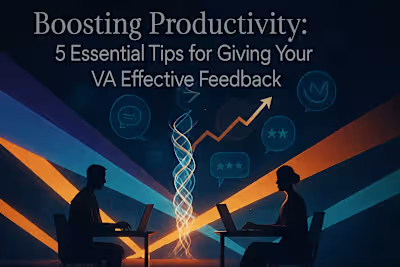Retaining Top Talent: 7 Powerful Strategies to Keep Your Best VAs Loyal

Retaining Top Talent: 7 Powerful Strategies to Keep Your Best VAs Loyal
Strategy 1: Provide Competitive and Fair Compensation
Benchmark Rates Regularly
Offer Raises and Bonuses
Strategy 2: Invest in Their Professional Growth
Provide Access to Training
Delegate More Complex Responsibilities
Strategy 3: Foster a Culture of Respect and Appreciation
Acknowledge Their Hard Work
Respect Their Time and Boundaries
Strategy 4: Ensure Clear Communication and Set Expectations
Maintain Open and Honest Dialogue
Set Clear Goals and Priorities
Strategy 5: Integrate Them into the Team
Include Them in Team Meetings
Share Company News and Updates
Strategy 6: Provide the Right Tools and Resources
Invest in a Proper Tech Stack
Grant Necessary Access
Strategy 7: Offer Flexibility and Autonomy
Focus on Results, Not Hours
Be Understanding of Personal Needs
References
Retaining Top Talent: 7 Powerful Strategies to Keep Your Best VAs Loyal
Strategy 1: Provide Competitive and Fair Compensation
Benchmark Rates Regularly
Offer Raises and Bonuses
Strategy 2: Invest in Their Professional Growth
Provide Access to Training
Delegate More Complex Responsibilities
Strategy 3: Foster a Culture of Respect and Appreciation
Acknowledge Their Hard Work
Respect Their Time and Boundaries
Strategy 4: Ensure Clear Communication and Set Expectations
Maintain Open and Honest Dialogue
Set Clear Goals and Priorities
Strategy 5: Integrate Them into the Team
Include Them in Team Meetings
Share Company News and Updates
Strategy 6: Provide the Right Tools and Resources
Invest in a Proper Tech Stack
Grant Necessary Access
Strategy 7: Offer Flexibility and Autonomy
Focus on Results, Not Hours
Be Understanding of Personal Needs
References
Posted Jun 30, 2025
Losing a great virtual assistant is costly and disruptive. Learn 7 proven strategies to retain your top VA talent, from providing growth opportunities to fostering a positive work culture.
0
7








